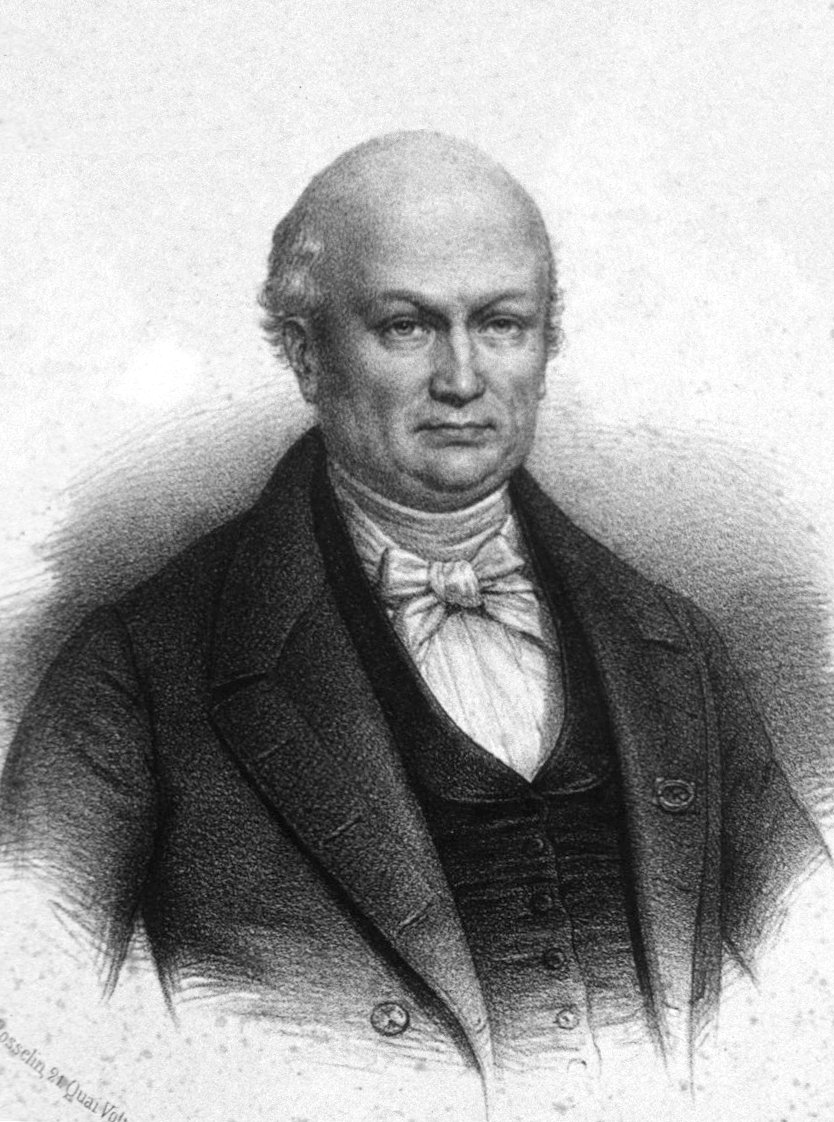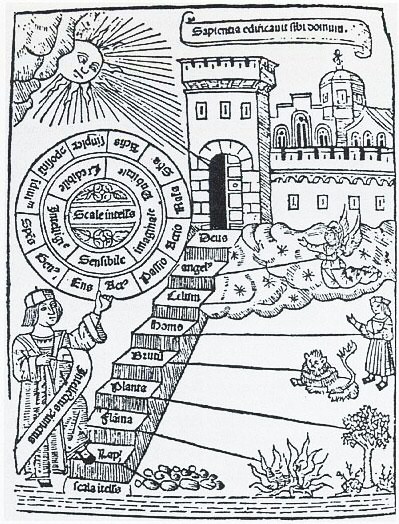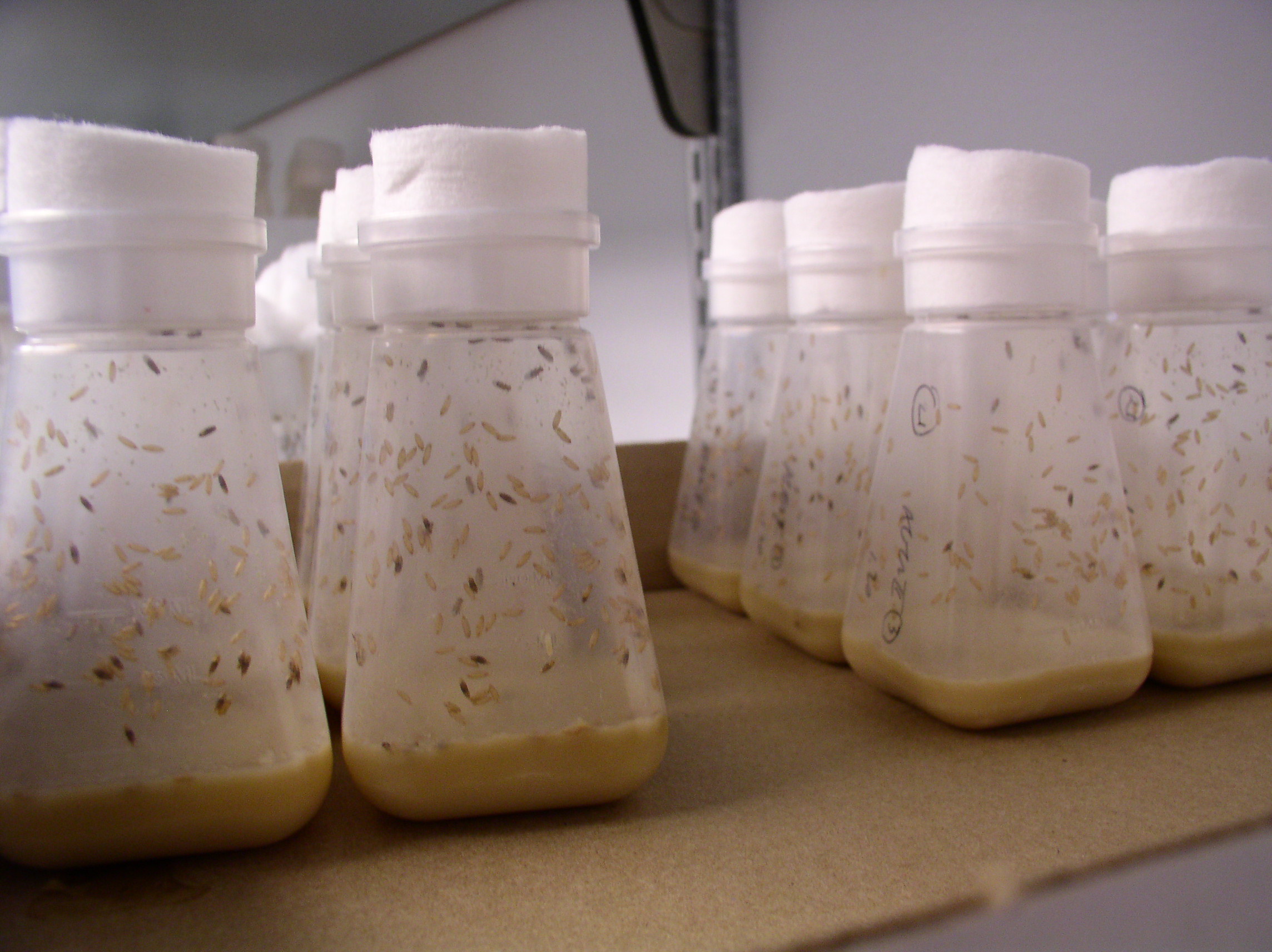|
Saltationism
In biology, saltation () is a sudden and large mutational change from one generation to the next, potentially causing single-step speciation. This was historically offered as an alternative to Darwinism. Some forms of mutationism were effectively saltationist, implying large discontinuous jumps. Speciation, such as by polyploidy in plants, can sometimes be achieved in a single and in evolutionary terms sudden step. Evidence exists for various forms of saltation in a variety of organisms. History Prior to Charles Darwin most evolutionary scientists had been saltationists. Jean-Baptiste Lamarck was a gradualist but similar to other scientists of the period had written that saltational evolution was possible. Étienne Geoffroy Saint-Hilaire endorsed a theory of saltational evolution that "monstrosities could become the founding fathers (or mothers) of new species by instantaneous transition from one form to the next." Geoffroy wrote that environmental pressures could produce sudde ... [...More Info...] [...Related Items...] OR: [Wikipedia] [Google] [Baidu] |
Mutationism
Mutationism is one of several alternatives to evolution by natural selection that have existed both before and after the publication of Charles Darwin's 1859 book ''On the Origin of Species''. In the theory, mutation was the source of novelty, creating new forms and new species, potentially instantaneously, in sudden jumps. This was envisaged as driving evolution, which was thought to be limited by the supply of mutations. Before Darwin, biologists commonly believed in saltationism, the possibility of large evolutionary jumps, including immediate speciation. For example, in 1822 Étienne Geoffroy Saint-Hilaire argued that species could be formed by sudden transformations, or what would later be called macromutation. Darwin opposed saltation, insisting on gradualism in evolution as geology's uniformitarianism. In 1864, Albert von Kölliker revived Geoffroy's theory. In 1901 the geneticist Hugo de Vries gave the name "mutation" to seemingly new forms that suddenly arose in his expe ... [...More Info...] [...Related Items...] OR: [Wikipedia] [Google] [Baidu] |
Hugo De Vries
Hugo Marie de Vries () (16 February 1848 – 21 May 1935) was a Dutch botanist and one of the first geneticists. He is known chiefly for suggesting the concept of genes, rediscovering the laws of heredity in the 1890s while apparently unaware of Gregor Mendel's work, for introducing the term "mutation", and for developing a mutation theory of evolution. Early life De Vries was born in 1848, the eldest son of Gerrit de Vries (1818–1900), a lawyer and deacon in the Mennonite congregation in Haarlem and later Prime Minister of the Netherlands from 1872 until 1874, and Maria Everardina Reuvens (1823–1914), daughter of a professor in archaeology at Leiden University. His father became a member of the Dutch Council of State in 1862 and moved his family over to The Hague. From an early age Hugo showed much interest in botany, winning several prizes for his herbariums while attending gymnasium in Haarlem and The Hague. In 1866 he enrolled at the Leiden University to major in b ... [...More Info...] [...Related Items...] OR: [Wikipedia] [Google] [Baidu] |
Albert Von Kölliker
Albert von Kölliker (born Rudolf Albert Kölliker'';'' 6 July 18172 November 1905) was a Swiss anatomist, physiologist, and histologist. Biography Albert Kölliker was born in Zurich, Switzerland. His early education was carried on in Zurich, and he entered the university there in 1836. After two years, however, he moved to the University of Bonn, and later to that of Berlin, becoming a pupil of noted physiologists Johannes Peter Müller and of Friedrich Gustav Jakob Henle. He graduated in philosophy at Zurich in 1841, and in medicine at Heidelberg in 1842. The first academic post which he held was that of prosector of anatomy under Henle, but his tenure of this office was briefin 1844 he returned to Zurich University to occupy a chair as professor extraordinary of physiology and comparative anatomy. His stay here was also brief; in 1847 the University of Würzburg, attracted by his rising fame, offered him the post of professor of physiology and of microscopical and compara ... [...More Info...] [...Related Items...] OR: [Wikipedia] [Google] [Baidu] |
Modern Synthesis (20th Century)
The modern synthesis was the early 20th-century synthesis of Charles Darwin's theory of evolution and Gregor Mendel's ideas on heredity into a joint mathematical framework. Julian Huxley coined the term in his 1942 book, '' Evolution: The Modern Synthesis''. The synthesis combined the ideas of natural selection, Mendelian genetics, and population genetics. It also related the broad-scale macroevolution seen by palaeontologists to the small-scale microevolution of local populations. The synthesis was defined differently by its founders, with Ernst Mayr in 1959, G. Ledyard Stebbins in 1966, and Theodosius Dobzhansky in 1974 offering differing basic postulates, though they all include natural selection, working on heritable variation supplied by mutation. Other major figures in the synthesis included E. B. Ford, Bernhard Rensch, Ivan Schmalhausen, and George Gaylord Simpson. An early event in the modern synthesis was R. A. Fisher's 1918 paper on mathematical population genetics, ... [...More Info...] [...Related Items...] OR: [Wikipedia] [Google] [Baidu] |
Alternative To Darwinism
Alternatives to Darwinian evolution have been proposed by scholars investigating biology to explain signs of evolution and the relatedness of different groups of living things. The alternatives in question do not deny that evolutionary changes over time are the origin of the diversity of life, nor that the organisms alive today share a common ancestor from the distant past (or ancestors, in some proposals); rather, they propose alternative mechanisms of evolutionary change over time, arguing against mutations acted on by natural selection as the most important driver of evolutionary change. This distinguishes them from certain other kinds of arguments that deny that large-scale evolution of any sort has taken place, as in some forms of creationism, which do not propose alternative mechanisms of evolutionary change but instead deny that evolutionary change has taken place at all. Not all forms of creationism deny that evolutionary change takes place; notably, proponents of theistic ... [...More Info...] [...Related Items...] OR: [Wikipedia] [Google] [Baidu] |
Mutation
In biology, a mutation is an alteration in the nucleic acid sequence of the genome of an organism, virus, or extrachromosomal DNA. Viral genomes contain either DNA or RNA. Mutations result from errors during DNA or viral replication, mitosis, or meiosis or other types of damage to DNA (such as pyrimidine dimers caused by exposure to ultraviolet radiation), which then may undergo error-prone repair (especially microhomology-mediated end joining), cause an error during other forms of repair, or cause an error during replication ( translesion synthesis). Mutations may also result from insertion or deletion of segments of DNA due to mobile genetic elements. Mutations may or may not produce detectable changes in the observable characteristics ( phenotype) of an organism. Mutations play a part in both normal and abnormal biological processes including: evolution, cancer, and the development of the immune system, including junctional diversity. Mutation is the ultima ... [...More Info...] [...Related Items...] OR: [Wikipedia] [Google] [Baidu] |
On The Origin Of Species
''On the Origin of Species'' (or, more completely, ''On the Origin of Species by Means of Natural Selection, or the Preservation of Favoured Races in the Struggle for Life''),The book's full original title was ''On the Origin of Species by Means of Natural Selection, or the Preservation of Favoured Races in the Struggle for Life''. In the 1872 sixth edition, "On" was omitted, so the full title is ''The origin of species by means of natural selection, or the preservation of favoured races in the struggle for life.'' This edition is usually known as ''The Origin of Species.'' The 6th is Darwin's final edition; there were minor modifications in the text of certain subsequent issues. See Freeman, R. B. In Van Wyhe, John, ed. ''Darwin Online: On the Origin of Species'', 2002. published on 24 November 1859, is a work of scientific literature by Charles Darwin that is considered to be the foundation of evolutionary biology. Darwin's book introduced the scientific theory that popula ... [...More Info...] [...Related Items...] OR: [Wikipedia] [Google] [Baidu] |
William Bateson
William Bateson (8 August 1861 – 8 February 1926) was an English biologist who was the first person to use the term genetics to describe the study of heredity, and the chief populariser of the ideas of Gregor Mendel following their rediscovery in 1900 by Hugo de Vries and Carl Correns. His 1894 book ''Materials for the Study of Variation'' was one of the earliest formulations of the new approach to genetics. Early life and education Bateson was born 1861 in Whitby on the Yorkshire coast, the son of William Henry Bateson, Master of St John's College, Cambridge. He was educated at Rugby School and at St John's College, where he graduated BA in 1883 with a first in natural sciences. Taking up embryology, he went to the United States to investigate the development of ''Balanoglossus'', a worm-like hemichordate which led to his interest in vertebrate origins. In 1883–4 he worked in the laboratory of William Keith Brooks, at the Chesapeake Zoölogical Laboratory in Hampton, ... [...More Info...] [...Related Items...] OR: [Wikipedia] [Google] [Baidu] |
Thomas Hunt Morgan
Thomas Hunt Morgan (September 25, 1866 – December 4, 1945) was an American evolutionary biologist, geneticist, embryologist, and science author who won the Nobel Prize in Physiology or Medicine in 1933 for discoveries elucidating the role that the chromosome plays in heredity. Morgan received his Ph.D. from Johns Hopkins University in zoology in 1890 and researched embryology during his tenure at Bryn Mawr. Following the rediscovery of Mendelian inheritance in 1900, Morgan began to study the genetic characteristics of the fruit fly ''Drosophila melanogaster''. In his famous Fly Room at Columbia University's Schermerhorn Hall, Morgan demonstrated that genes are carried on chromosomes and are the mechanical basis of heredity. These discoveries formed the basis of the modern science of genetics. During his distinguished career, Morgan wrote 22 books and 370 scientific papers. As a result of his work, ''Drosophila'' became a major model organism in contemporary genetics. The ... [...More Info...] [...Related Items...] OR: [Wikipedia] [Google] [Baidu] |
Biology
Biology is the scientific study of life. It is a natural science with a broad scope but has several unifying themes that tie it together as a single, coherent field. For instance, all organisms are made up of cells that process hereditary information encoded in genes, which can be transmitted to future generations. Another major theme is evolution, which explains the unity and diversity of life. Energy processing is also important to life as it allows organisms to move, grow, and reproduce. Finally, all organisms are able to regulate their own internal environments. Biologists are able to study life at multiple levels of organization, from the molecular biology of a cell to the anatomy and physiology of plants and animals, and evolution of populations.Based on definition from: Hence, there are multiple subdisciplines within biology, each defined by the nature of their research questions and the tools that they use. Like other scientists, biologists use t ... [...More Info...] [...Related Items...] OR: [Wikipedia] [Google] [Baidu] |
Evolution
Evolution is change in the heritable characteristics of biological populations over successive generations. These characteristics are the expressions of genes, which are passed on from parent to offspring during reproduction. Variation tends to exist within any given population as a result of genetic mutation and recombination. Evolution occurs when evolutionary processes such as natural selection (including sexual selection) and genetic drift act on this variation, resulting in certain characteristics becoming more common or more rare within a population. The evolutionary pressures that determine whether a characteristic is common or rare within a population constantly change, resulting in a change in heritable characteristics arising over successive generations. It is this process of evolution that has given rise to biodiversity at every level of biological organisation, including the levels of species, individual organisms, and molecules. The theory of evol ... [...More Info...] [...Related Items...] OR: [Wikipedia] [Google] [Baidu] |








